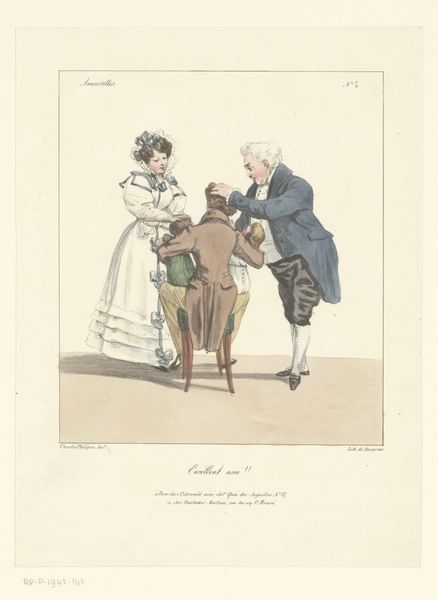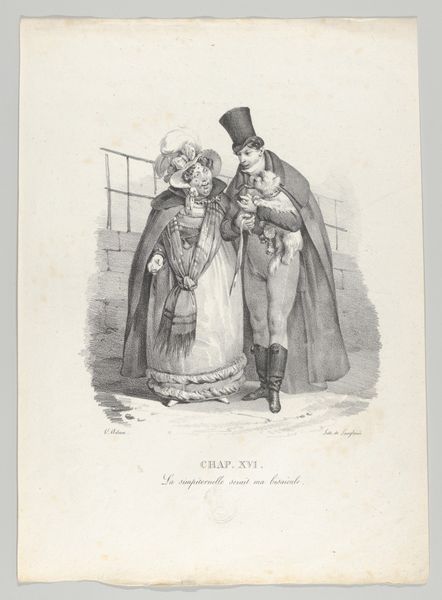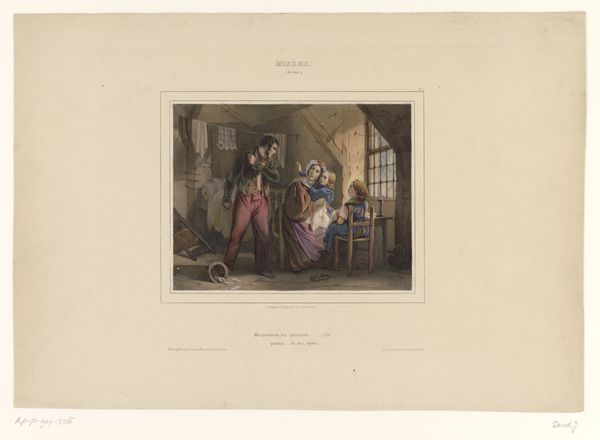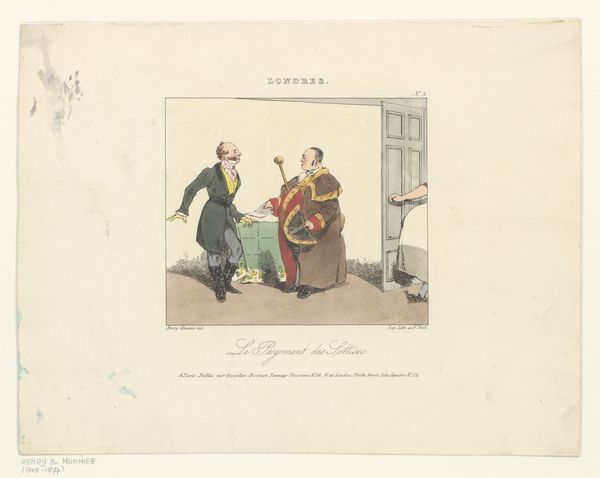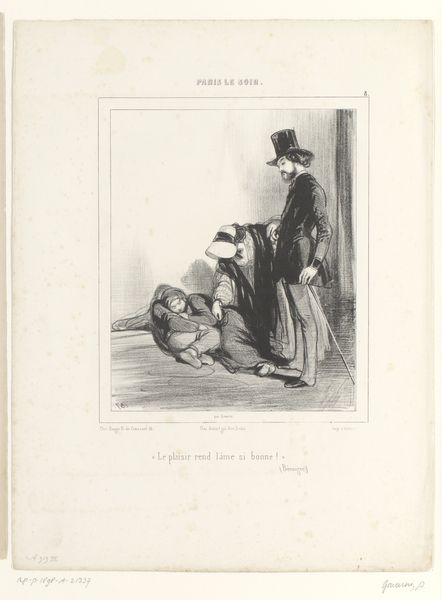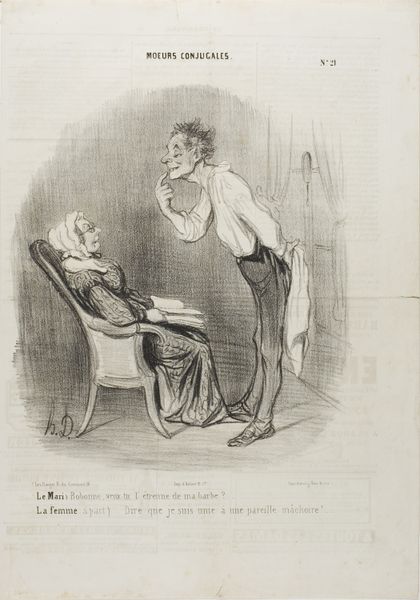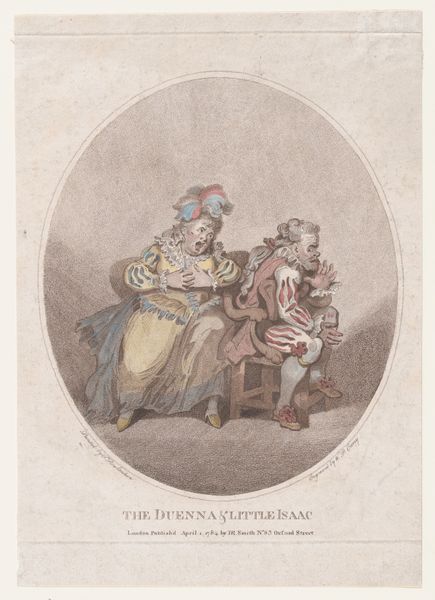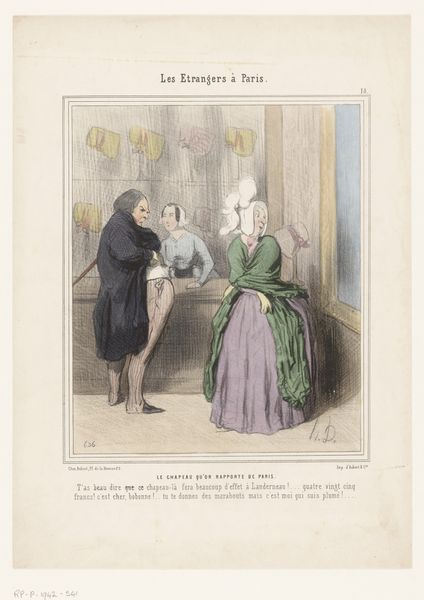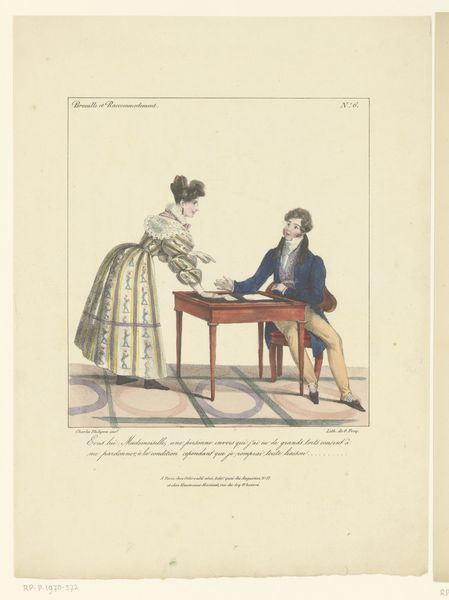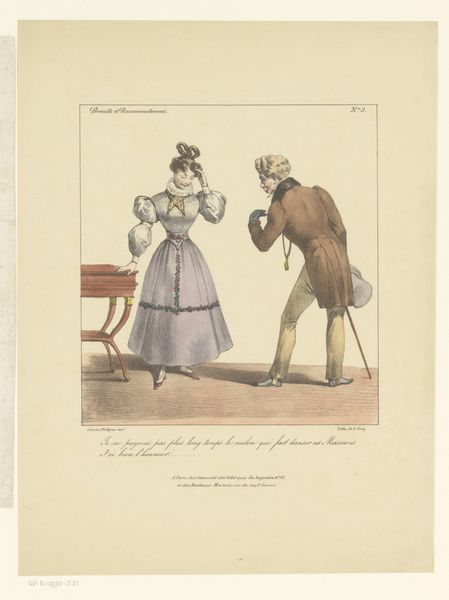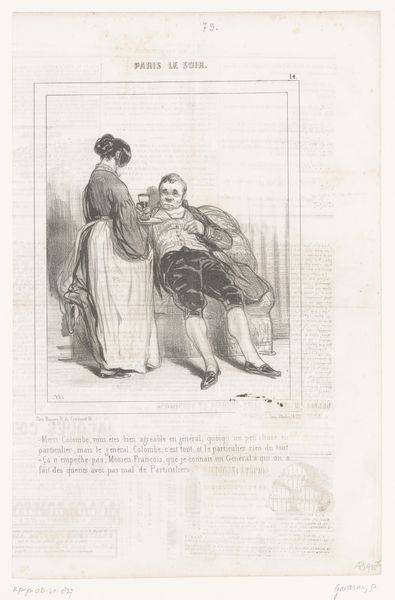
drawing, pen
#
drawing
#
caricature
#
romanticism
#
pen
#
watercolour illustration
#
genre-painting
#
cartoon carciture
Dimensions: height 298 mm, width 249 mm
Copyright: Rijks Museum: Open Domain
Robert Seymour created this print, now at the Rijksmuseum, depicting a drunken man and woman. The most prominent symbol is, of course, the drunkenness itself, a motif echoing through centuries. Observe how the dishevelled state and loss of control reflect a deeper, more primal abandonment. This isn't merely a snapshot of intoxication; it is a window into human vulnerability. The motif of inebriation stretches back to ancient Greece, where Dionysus, the god of wine, represented not only intoxication but also ecstasy, liberation, and altered states of consciousness. Like the Dionysian frenzy, the figures here hint at a release from societal norms, a descent into a state where inhibitions are shed. Yet, Seymour's rendering also carries a moral undertone, typical of his time, cautioning against the perils of excess. This duality is vital, for it shows how potent symbols evolve, reflecting cultural anxieties and desires. It’s a reminder of how images can tap into our collective memory, stirring both fascination and unease.
Comments
No comments
Be the first to comment and join the conversation on the ultimate creative platform.
